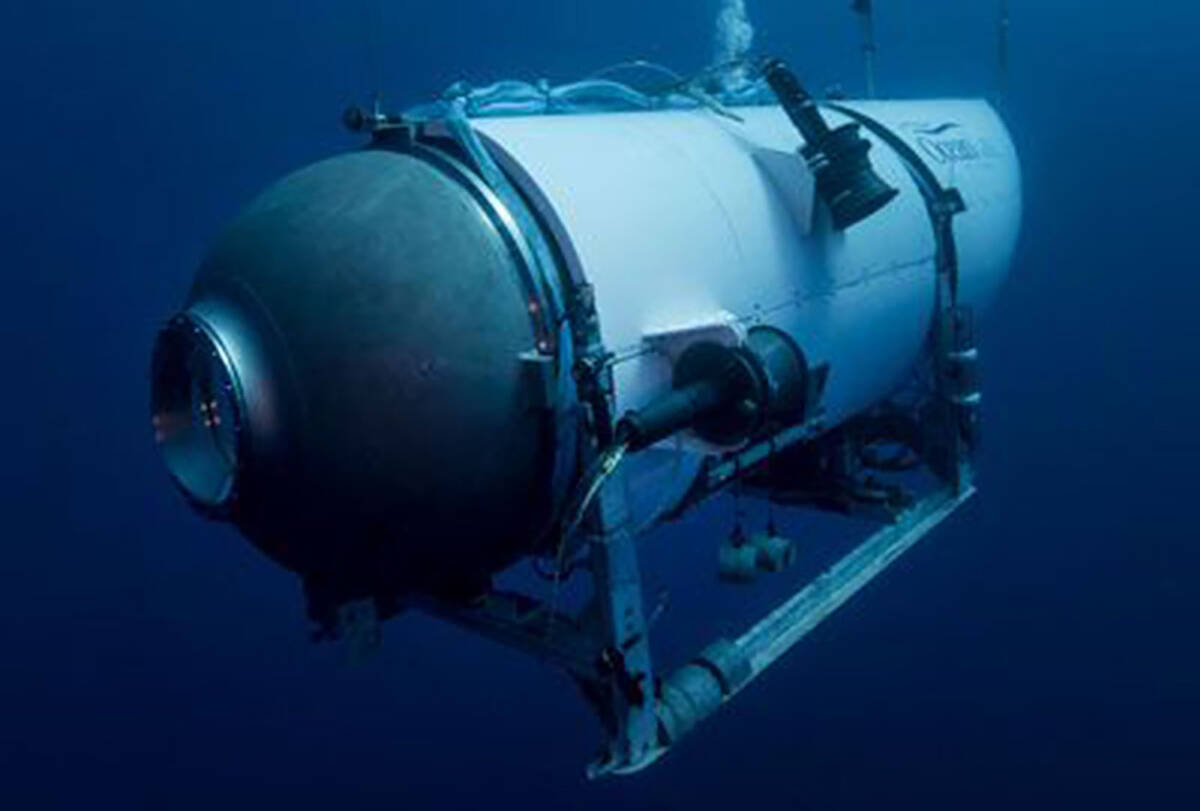Lawsuits foreshadowed Titanic sub disaster
Two lawsuits raised concerns about the structural integrity of the Titan submersible long before this week’s disaster killed all five people aboard the craft.
A lawsuit filed in 2018 by David Lochridge, a former employee of OceanGate Inc., the sub’s manufacturer, mentioned possible “implosion” and warned of “potential danger to passengers of the Titan as the submersible reached extreme depths.”
At a news conference Thursday, U.S. Coast Guard Rear Admiral John Mauger said a “catastrophic implosion” destroyed the Titan as it descended toward the wreckage of the Titanic.
In a lawsuit filed this year, Marc and Sharon Hagle, a wealthy Florida couple who paid $210,258 to participate in a dive to the Titanic, alleged they were defrauded by Stockton Rush, OceanGate’s CEO, when he made false promises about their “concerns as to the integrity” of the Titan.
Rush was piloting the Titan when it imploded. Four passengers also were killed, including British billionaire Hamish Harding, Pakistani businessman Shahzada Dawood and his son Suleman Dawood, and French oceanographer Paul-Henri Nargeolet.
The Hagles were not aboard the sub when the catastrophe occurred. According to their lawsuit, they lost faith in the venture after their planned dive to the Titanic was rescheduled multiple times.
Ex-employee refused to authorize manned tests
The lawsuit involving Lochridge arose after OceanGate hired him to serve as director of marine operations for the Titan project.
OceanGate described Titan, built at the company’s facility in Everett, Washington, as “two titanium hemispheres linked by a carbon fiber wound cylinder that is 100 inches long, five feet in diameter, and has five-inch-thick walls.”
In January 2018, Lochridge criticized the company’s research and development process for the sub.
Lochridge insisted that OceanGate should “obtain a scan of the hull of Titan’s experimental vessel prototype to detect potential flaws rather than relying on acoustic monitoring.”
After Lochridge refused to authorize manned tests of Titan, OceanGate fired him.
In June 2018, OceanGate sued Lochridge in a Washington state court, alleging that he violated a confidentiality agreement by discussing his safety concerns with OSHA representatives and two other unidentified people.
Lochridge responded by removing the lawsuit to federal court and filing a counterclaim against OceanGate.
Calling the Titan “experimental,” Lochridge alleged that OceanGate would be putting passengers’ lives at risk by diving to “extreme depths of 4,000 meters — a depth never before reached by an OceanGate manned submersible composed of carbon fiber.”
Lochridge faulted OceanGate for relying “solely on their acoustic monitoring system” when testing the sub.
According to Lochridge, “This type of acoustic analysis would only show when a component is about to fail — often milliseconds before an implosion.”
In the Thursday news conference, Mauger described the Titan’s remains as strewn on the ocean floor about 1,600 feet from the bow of the Titanic, which Mauger said was consistent with a “catastrophic implosion.”
Lochridge’s counterclaim alleged that OceanGate reacted to his safety concerns with “hostility and denial of access.”
When contacted Thursday, Lochridge declined to comment.
According to court records, he and OceanGate settled their litigation in November 2018.
Wealthy couple alleged they were defrauded
In February, the Hagles filed suit in state court in Florida, alleging that Rush committed fraud by giving them false assurances about the submersible.
Marc Hagle, a wealthy real estate developer and philanthropist in his 70s, and his wife, Sharon, reside in a sprawling mansion in Winter Park, Florida.
Last year the Hagles made a suborbital flight aboard Jeff Bezos’ Blue Origin spacecraft.
In November 2016, the Hagles signed a contract with OceanGate to participate in a dive to visit the wreckage of the Titanic.
According to the Hagles’ lawsuit, in September 2017, after they suspected the dive was falling off schedule, Rush visited their home in an effort to keep them committed to the venture.
During the meeting, the Hagles “expressed their concerns” about the submersible.
According to the couple’s lawsuit, Rush said the submersible would be ready to dive by June 2018 and offered assurances about “the sound tests to be performed on the capability and structural integrity” of the hull.
But in March 2018, a group of submersible industry experts wrote a letter to Rush expressing “unanimous concern” that lack of proper testing “could result in negative outcomes (from minor to catastrophic) that would have serious consequences for everyone in the industry.”
According to the Hagles’ lawsuit, OceanGate ended up canceling the June 2018 dive, saying the company “had not had sufficient time to conduct the full series of tests and dives needed to certify the Titan to the depth necessary to reach the Titanic.”
Rescheduled dives, slated to occur in July 2019 and July 2020, also were canceled.
When the Hagles asked for their money back, OceanGate refused.
In the Hagles’ lawsuit against Rush, they claim he defrauded them. The Hagles demanded a refund along with punitive damages for Rush’s “unfair and deceptive acts.”
Their case remained pending this week when Titan imploded and Rush was killed.
The Hagles did not respond Thursday to requests for comment.
OceanGate issued a statement Thursday, saying in part: “Our hearts are with these five souls and every member of their families during this tragic time.”
No one answered the company’s phones when a reporter called seeking comment for this story.
Follow @dougkariauthor on Instagram.




























